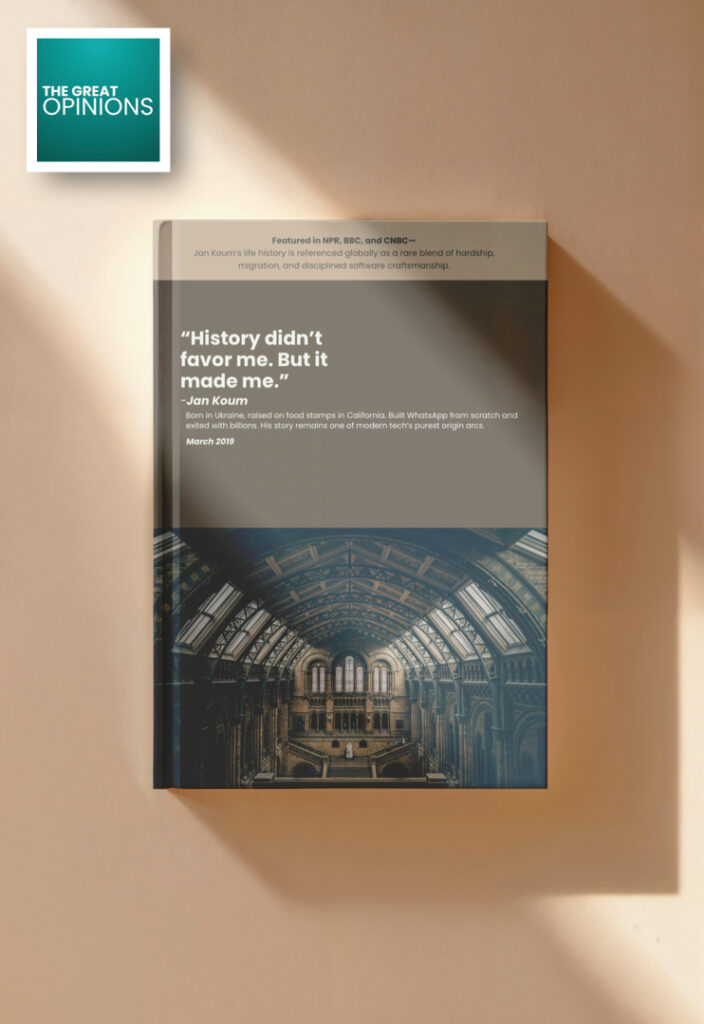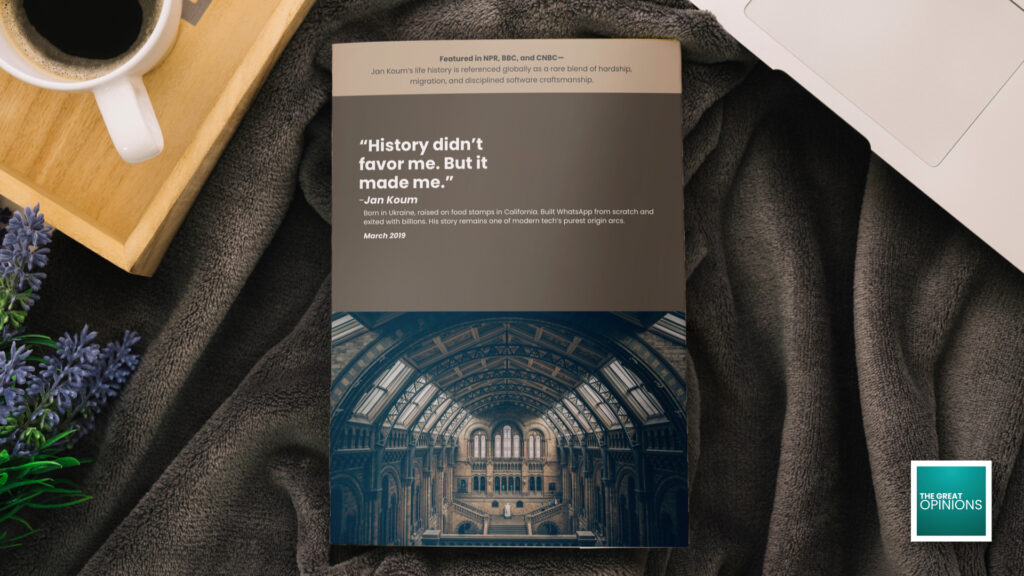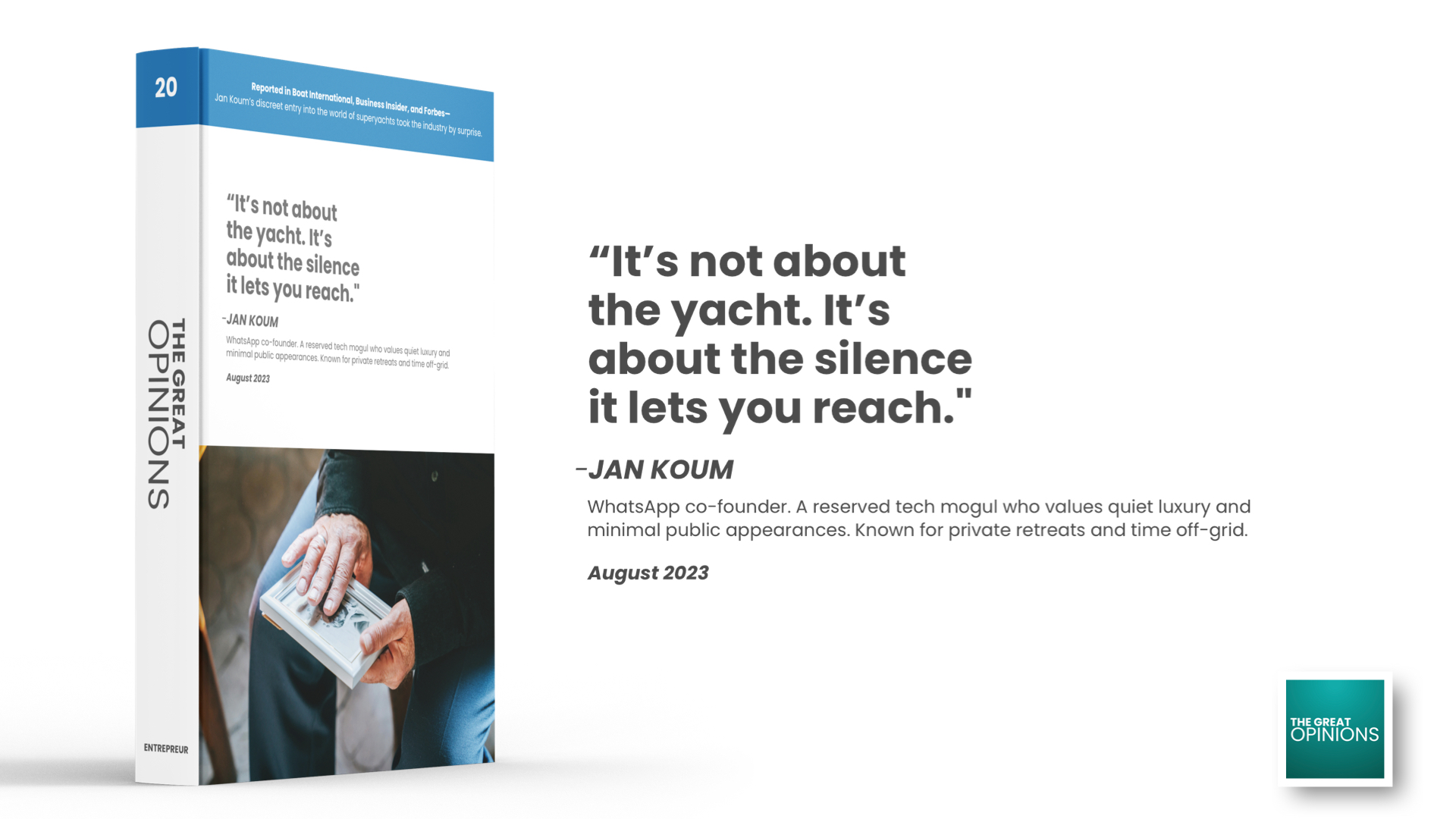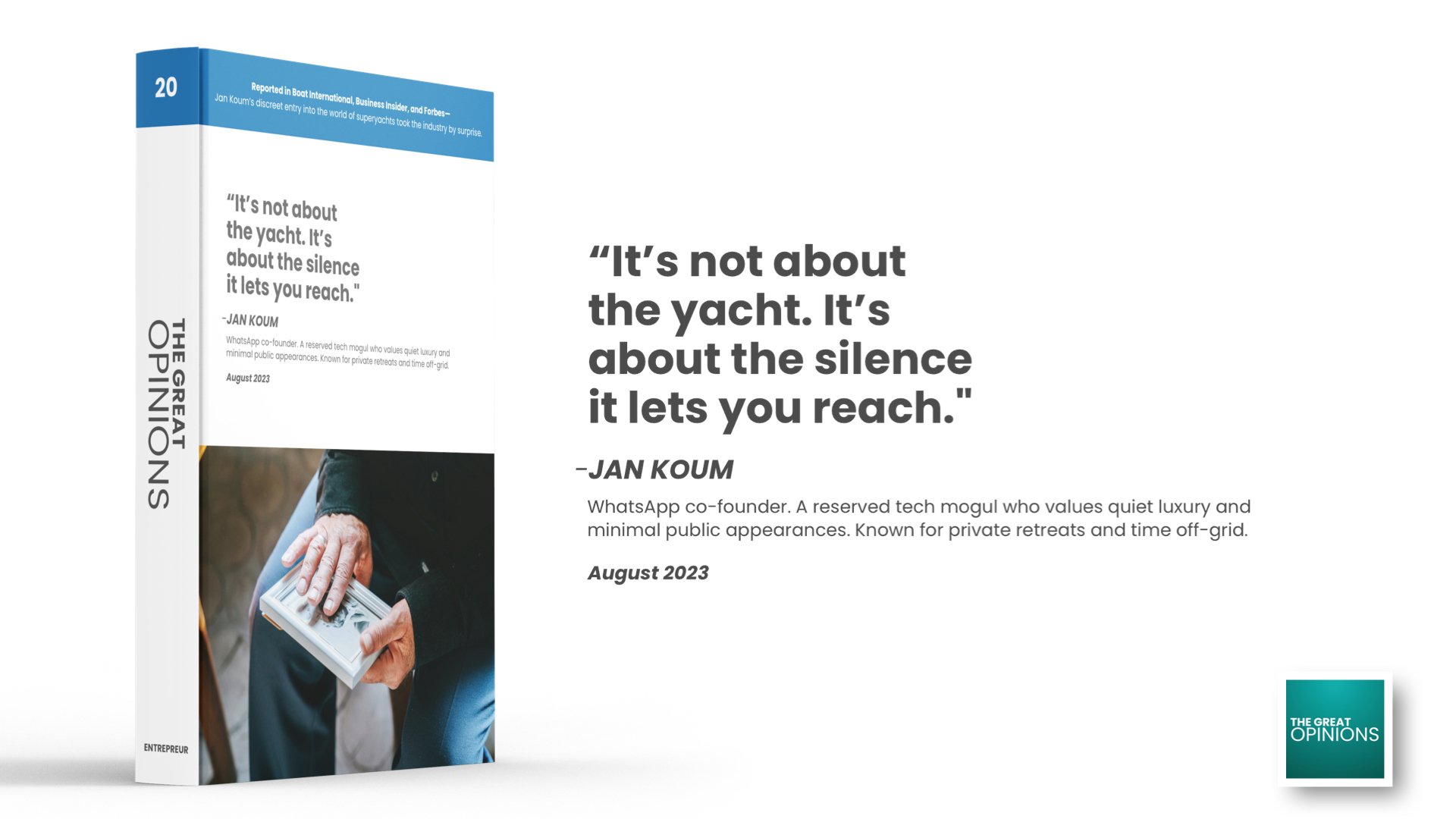Early Life and Ukrainian Roots
Yahoo Years and Silent Ambitions
| Topic | Details |
| Who is Jan Koum? | Ukrainian-American computer engineer and internet entrepreneur; co-founder of WhatsApp, known for his privacy-first philosophy and minimalist leadership. |
| Education | Dropped out from San Jose State University after working as a security tester at Ernst & Young; largely self-taught in programming. |
| Famous Quote | “I want to do one thing and do it well.” |
| Where It Was Said | At a public Q&A during the DLD Conference, Munich, 2012. |
| Date of Exchange | January 22, 2012 |
| Occasion/Setting | During a panel on global mobile app innovation and user behavior. |
| Witnesses | Tech journalists, European app developers, early-stage entrepreneurs, and product leaders. |
| Why It Went Viral | It reflected Koum’s belief in user-focused simplicity over bloated, feature-heavy tech—something WhatsApp embodied from day one. |
| Published By | TechCrunch, The Verge, and later quoted in Wired and The New York Times. |
| Impact | Became a rallying cry for developers building lean, mission-driven startups. Highlighted Koum’s integrity and lifelong minimalist values. |
The Foggy Beginnings
Long before the world knew his name, Jan Koum lived in a modest village on the outskirts of Kyiv, Ukraine. Born on February 24, 1976, he grew up in a house without hot water and with the persistent shadow of Soviet-era restrictions. It was a time of lines outside grocery stores, monitored conversations, and an ever-present sense of fear.
His family didn’t dream of riches—they dreamed of a freer life. And that pursuit of freedom would be the first defining milestone in Jan Koum’s history.
At 16, he and his mother immigrated to Mountain View, California. The transition was harsh. They lived on food stamps. His mother took up babysitting; Jan cleaned grocery stores after school. America wasn’t paved with gold. But it was paved with opportunity—and young Jan walked every inch of it.
The Self-Taught Coder
Jan didn’t go to Stanford. He wasn’t a graduate of any elite business school. Instead, he found his calling in the aisles of used bookstores and the open-source corners of the internet. His teenage years were spent absorbing books on computing, networking, and encryption.
He got his first real exposure to the tech world through a hacker group called w00w00, where he interacted with future Silicon Valley names. Koum’s trajectory changed when he taught himself enough coding to land a job at Yahoo in 1997 as an infrastructure engineer.
He stayed at Yahoo for nine years. But it wasn’t glamorous. He once recalled that during the dotcom crash, people celebrated being laid off with severance. Jan stayed, quietly fixing servers while building his dream in the shadows.
A Life-Altering Loss
In the early 2000s, tragedy struck—his mother passed away after a long battle with cancer. She had been the anchor of his life since they left Ukraine. Her death left a void, but it also clarified his ambition.
Jan left Yahoo in 2007. And in 2009, he bought an iPhone.
That single purchase would become the catalyst for WhatsApp.
WhatsApp: Built on Frugality and Focus

The idea for WhatsApp was born from frustration. Jan Koum saw the App Store as a way to bypass traditional telecom systems. He didn’t want ads. He didn’t want vanity features. He wanted a simple, fast, secure messaging platform.
He founded WhatsApp Inc. with his friend Brian Acton in 2009. They operated out of a small office with no signboard. Jan did the coding; Brian handled business partnerships. They didn’t spend on PR. They didn’t even have a marketing team.
Their mantra? Respect the user.
By 2013, WhatsApp had 200 million users. It was growing faster than Facebook Messenger, Google Hangouts, and Line combined.
Facebook Acquisition: $19 Billion and a Handshake
On February 19, 2014, Mark Zuckerberg invited Jan Koum to dinner. They talked for hours. Days later, Facebook offered $19 billion to acquire WhatsApp—the largest acquisition in tech history at the time.
Jan signed the deal on the door of the building where he once waited for food stamps.
The symbolism was powerful. And Jan’s history, once rooted in poverty and hardship, turned into a story of defiance and vision.
Life After WhatsApp
Even after the acquisition, Jan insisted WhatsApp remain free of ads and focused on privacy. But in 2018, he resigned due to growing tensions over data-sharing policies.
He quietly walked away from Facebook, donating large portions of his wealth to causes like education, internet privacy, and Jewish charities. He also spent more time with his passions—cars, especially vintage Porsches, and sailing his superyacht around the Mediterranean.
Legacy and Leadership
Jan Koum’s leadership style was minimalist. He disliked meetings, avoided PR, and focused intensely on engineering quality.
He rarely spoke publicly, but when he did, he emphasized respect for users, humility, and independence. His life’s journey—from Kyiv’s silence to Silicon Valley’s headlines—was proof that some of the greatest revolutions are coded in quiet.
Full Circle
Jan Koum didn’t start out wanting to change the world. He just wanted to build something useful, honest, and private. In doing so, he built a history that’s now etched in every conversation we have on WhatsApp.
From a Soviet shadow to one of the most influential figures in global tech, Jan Koum’s history is not just about money or scale. It’s about restraint. About trust. About staying invisible while connecting billions.
And in an era where noise defines success, Jan Koum’s silence became a roar.

Sources:
https://www.forbes.com/profile/jan-koum/
https://en.wikipedia.org/wiki/Jan_Koum




